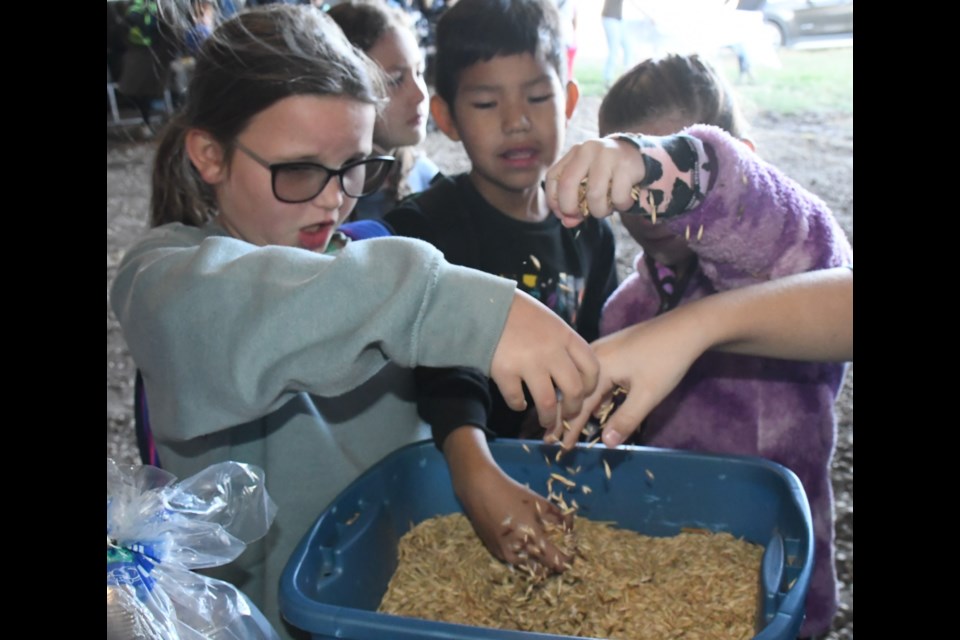Having experienced the sights, sounds and smells of agriculture in the spring, students returned to an area farm recently to learn what happens there during the fall.
Students in grades 2 to 4 from Sunningdale and Sacred Heart schools visited Gordon Knox’s farm east of Moose Jaw on Sept. 28 to participate in Agriculture in the Classroom — Saskatchewan’s (AITC-SK) Food Farm Program. The initiative teaches children from where their food comes and has them participate in ag-related stations.
At the farm, students tested water quality, learned about dairy cows, determined soil health using fertilizers, learned how chickpeas became hummus, helped make fries from potatoes, learned about grains, crushed canola seeds, learned about chicken production and held baby chicks.
Interestingly, the Knox farm was the only one in Saskatchewan to participate in the program’s early days. Now, four farms participate, along with other venues like a veterinarian clinic, a conservation centre and a research centre.
Easton Vanthuyne, a Grade 4 student at Sacred Heart, thought visiting the farm was interesting since he could attend several “cool” stations. Specifically, holding the baby chicks was great because they were “really fluffy and cute.”
He also learned that most of his food is grown on a farm and doesn’t just appear at a grocery store — a fact he didn’t know before attending the Food Farm Program.
“It’s my first time figuring it out,” Vanthuyne added with a shrug.
Student Araylia Poulin had an “amazing” time visiting each station because she learned “cool things” about food production and crushing canola. She particularly liked discovering how chickpeas become yummy hummus and how potatoes become French fries.
“They (French fries) tasted better when they were plain without that much salt,” she smiled.
The Grade 3 student at Sacred Heart added that while she has been on her grandparents’ farm and interacted with the animals there, she wasn’t familiar with everything she encountered during the morning — so it proved to be a good day.
Hayes Heatherington, a Grade 4 student at Sunningdale, liked learning about — and eating! — French fries, holding the fuzzy chicks and eating the “delicious” candy given out during the soil-health station.
When asked what he learned that he didn’t know before, the youngster said he didn’t know that farmers could grow purple potatoes. This helped him better understand food production.
“(It’s) pretty important because then you know how your food is made and when it’s made,” Heatherington added.
Leah Hermanson, fund development manager with AITC-SK, said the day wouldn’t have been possible without a donation from the family of area farmer J.C. Tremblay, who died this year. He believed young people should learn about their food and the agricultural practices and the technologies behind that production.
He was also a big supporter of Agriculture in the Classroom.
The goal in the spring was to help students learn about seeding and planting, while the goal in the fall was to teach them about harvest, said Hermanson.
“… they’re really completing that full cycle and seeing what they started in the spring come to a conclusion in the fall,” she remarked.
AITC-SK is seeing a disconnect in society about agriculture and food production, best illustrated by youths thinking their food comes from a store, she continued. However, when on the farm, they are excited to learn and ask many questions, while the organization is thrilled to connect them with local industry experts.
The future of agriculture is in classrooms since some youths could work in the industry as adults, Hermanson said.
She added that the ag community must ensure kids receive positive, accurate, balanced, current and science-based messages while helping them think critically about negative messages or misinformation they may hear about ag.




